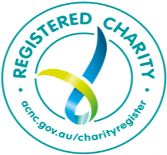Everywhere we look we are being told the grass is greener on the other side of beauty through media outlets, whether it be a bigger house, faster car, a certain school our classmates attend, a suburb others live in, or even the shape of our eyelids, the fairness or tanned nature of our skin—it is always greener on the other side. Or is it?
We know that advertisers use a range of tools to enhance and sell their products. They have no limit or mercy when it comes to hitting the nerve that will pull in the punters. Racial enhancement is a common tool that has been used for as long as there has been colonisation. It is commonly perceived that only the ‘colonised’ ‘non-white’ other is targeted in this case, with products such as ‘fair and lovely’ for women, and men, and other companies promoting whiter skin for people labelled ‘brown’ and ‘black’; there are many cosmetic treatments for those who wish to make more lasting changes, such as eyelid surgery common to people living in East and South-east Asia or rhinoplasty (nose surgery) for people living in the Middle-Eastern and Mediterranean regions. What is often lost is that there is also a movement amongst people perceived as Western and beautiful by the ethnic minority to want to tan themselves. This is the fascinating side to cross-cultural interaction. Perhaps we can understand through examining the advertising sector’s push to sell and that beauty is truly subjective.
The Fallacy of White is Beautiful:
For many years women and men of darker-complexion have been sold the idea that fairer skin is better because it is beautiful, positive and attractive. Recently, in India, the Advertising Standards Council of India (ASCI) put in place new guidelines that cannot “depict people with dark complexions as ‘unattractive, unhappy, depressed or concerned.’” However, this does not stop advertisers highlighting that a woman can be happier with fair skin.
It may seem to by negating the image of a man or woman looking sullen while in their darker-skin, but it simply would lead to that scene of an ad or print campaign being cut out and done away with, and only showing the woman smiling and happy with her or his whiter-self.
This white skin movement is also an epidemic among men in India now, with the advertisers making use of a previously neglected market. The bleaching creams, meanwhile, destroy pigmentation, have harmful chemicals, and for those that cannot afford these basic cosmetic treatments darker and harsher chemical means are sort out in back-streets and home-brews.
This crisis of race is not only found in India, or Asia, but stems across what could simply be seen as those countries which have been colonised by Europeans or have a heavy cultural influence coming to them from the West. Australia, being a multicultural country, is no less of a sufferer of this condition than its Asian continental neighbours.
Surgery is The Answer to Beauty:
Some seek to alter their physical traits permanently with cosmetic surgery options. In the statistics presented from the ISAPS 2014 Global Statistics, world-wide eye lid surgery (blepharoplasty) and facial implants are amongst the top elective procedures women choose, just under breast related surgeries. Rhinoplasty, remains 13th on the scale of most common procedures globally. However, within certain communities in Australia it is dominant. These statistics are solely based on the cosmetic and aesthetic elective surgery procedures performed.
The recent Insight episode, ‘Beauty Race,’ looked in to the cosmetic industry and racial boundaries being redefined in this field. Two cosmetic surgeons, Dr. Andrew Kim and Dr. Angelo Tsirbas, both confirmed the surgeries dominant in certain communities could be identified as perceiving beauty that is the Western or European look. And those most common? Blepharoplasty for Asian clients and rhinoplasty for Mediterranean and Middle-eastern clients.
Brown is also Beautiful?
While this may be a well-known identity condition of the African and Asian immigrant community, we often pass by the seemingly obvious opposing syndrome—those with fair skin tanning themselves on beaches and salons to appear browner. Tanned skin is beautiful in the eyes of those with fair skin. Some may interject and not see this as a problematic condition as compared with the other. However, skin cancer (Melanoma) is the 4th major cancer prevalent in Australia. It equally affects men and women, as well as the young and old, with more than 10,000 new cases diagnosed each year.
The death of Clare Oliver caused by tanning in solariums, highlights that the so-called safer option to brown skin is not, in fact, safe. There has also been no study, as yet, in to the effects of tanning lotions and creams on skin. There is no study to state what harmful effects the chemicals used to produce the tan would have in the long term on those who use it frequently.
Something that is clear, the cross-cultural interactions means that the beauty race for the perfect look runs both ways. It is definitely not a one-sided exchange where those not of European decent crave to look European. Ms. Oliver’s case also highlights an often neglected perception, which is that the cross-cultural interaction is not just on the level of coloniser and colonised, but that it occurs from all cultures due to the multicultural and diverse nature of Australian society.
It is a human condition to want to enquire, experiment, and seek out something new. But, when it turns in to craving to change how you look due to negative perceptions of a persons’ racial features, this crosses the line. While people feel compelled to change their physical features due to racism, this indicates Australia still has a lot of work to end racial discrimination.
Media and Advertising Responsibilities in the Beauty Race:
The media has a lot to atone for in regards to racial negative and positive perceptions. We only have to look at journalistic reporting, ad campaigns and marketing of products recognise that the Australian condition is to ignore the ever diversifying multicultural population. Looking to prime the presenters on mainstream media outlets we only see what can be described as European faces. The audiences of these television shows and ads are not from a mono-culture. This factor will only perpetuate the idea and concept that the ‘white look’ is the ‘right look’. When media diversifies, so shall the concepts of beauty diversify.
Beauty lies in the eye of the beholder, and truly that beauty cannot be defined by a colour, eye fold, contoured body, bridged nose or a larger ‘booty’. Because
we do not know what lies behind those beholder’s eyes. One thing is for certain, the grass is not necessarily greener on the other side, and it is better to water and maintain the field we already have. Surely a healthy body, which is worshipped so by its owner is the best form of beautification?
In Australia we have the ability to be able to live and work in a society that is multicultural, and is built from migration. This is only experienced in a few other countries around the world. Perceptions won’t change amongst the consciousness of the people until the marketing and advertising industry also changes how they push products on to their submissive consumers. Until every face is used as a tool for advertisement, not every face will be thought of as beautiful.



Great article!
I agree that a more diverse representation of culture in the media will lead to a diverse culture of beauty standards in society.
Some good points made here!
Thank you for your comments Nav. K Samir. Please share the article with others who would be interested in this topic. You can like us on Facebook, and follow us on Twitter and YouTube too.